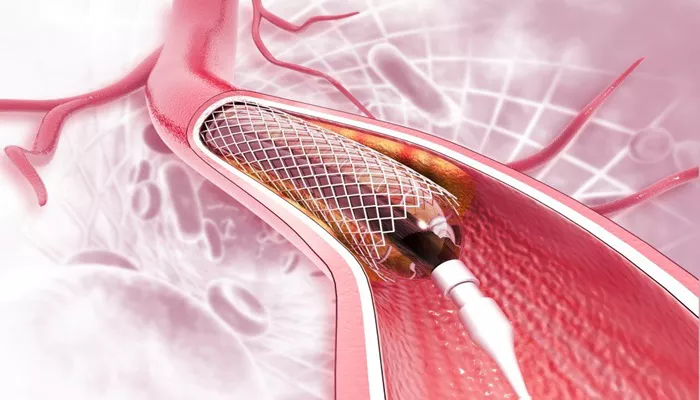Coronary artery disease (CAD) is a prevalent health condition that arises from the blockage or narrowing of the coronary arteries, which supply blood to the heart muscle. This condition can lead to various diseases and complications, significantly affecting an individual’s health and quality of life. Understanding the diseases associated with coronary artery blockage is crucial for prevention, early diagnosis, and effective treatment. This article will explore the diseases caused by blocking the coronary artery, focusing on their mechanisms, symptoms, and management.
Diseases Caused by Blocking The Coronary Artery
1. Angina Pectoris
Angina pectoris is a condition characterized by chest pain or discomfort due to reduced blood flow to the heart muscle. It is often a symptom of coronary artery disease and can be classified into two main types:
Stable Angina: This type occurs predictably during physical exertion or emotional stress. The pain typically subsides with rest or the use of nitroglycerin.
Unstable Angina: This type is more severe and can occur at rest or with minimal exertion. Unstable angina may last longer and is not relieved by rest or medication. It is considered a medical emergency, as it can precede a heart attack.
Symptoms of Angina:
- Chest pain or discomfort, often described as squeezing or pressure
- Pain that may radiate to the shoulders, neck, arms, back, or jaw
- Shortness of breath
- Nausea or fatigue
Management: Treatment for angina may include lifestyle modifications, medications (such as nitrates, beta-blockers, and antiplatelet agents), and invasive procedures like angioplasty or coronary artery bypass grafting (CABG) if symptoms persist.
see also: What Type of Fatty Acid Increases Heart Disease Risk?
2. Myocardial Ischemia
Myocardial ischemia refers to a condition where the heart muscle does not receive enough blood and oxygen, leading to damage or dysfunction. This condition can result from significant coronary artery blockage and can be acute or chronic.
Causes of Myocardial Ischemia:
- Atherosclerosis leading to narrowed coronary arteries
- Blood clots that obstruct blood flow
- Severe spasm of the coronary arteries
Symptoms:
- Chest pain or discomfort (similar to angina)
- Shortness of breath
- Fatigue, especially during physical activity
- Dizziness or lightheadedness
Management: Treatment focuses on improving blood flow to the heart. This may involve lifestyle changes, medications, and surgical interventions to restore adequate blood supply.
3. Myocardial Infarction (Heart Attack)
A myocardial infarction, commonly known as a heart attack, occurs when blood flow to a part of the heart is blocked for an extended period, leading to damage or death of heart muscle tissue. This blockage is often due to a ruptured plaque in the coronary artery, resulting in a blood clot.
Risk Factors:
- High cholesterol levels
- Hypertension
- Smoking
- Diabetes
- Obesity
- Sedentary lifestyle
- Family history of heart disease
Symptoms:
Severe chest pain or discomfort, often described as a crushing sensation
Pain radiating to the arms, back, neck, or jaw
Shortness of breath
Cold sweat
Nausea or vomiting
Management: A heart attack is a medical emergency requiring immediate treatment. Management may include medications (such as thrombolytics to dissolve clots), angioplasty, or CABG to restore blood flow to the heart.
4. Heart Failure
Heart failure is a chronic condition that occurs when the heart cannot pump blood effectively to meet the body’s needs. It can result from prolonged coronary artery disease and myocardial ischemia. Over time, the heart muscle weakens, leading to fluid buildup in the lungs and other parts of the body.
Types of Heart Failure:
Systolic Heart Failure: The heart’s ability to contract and pump blood is impaired.
Diastolic Heart Failure: The heart’s ability to relax and fill with blood is compromised.
Symptoms:
Shortness of breath, especially during exertion or lying flat
Fatigue and weakness
Swelling in the legs, ankles, and abdomen
Rapid or irregular heartbeat
Persistent cough or wheezing
Management: Treatment for heart failure may include lifestyle changes, medications (such as diuretics, ACE inhibitors, and beta-blockers), and advanced therapies like implantable devices or heart transplantation in severe cases.
5. Arrhythmias
Arrhythmias are irregular heartbeats that can occur due to inadequate blood flow to the heart muscle. They can be caused by damage to the heart tissue from coronary artery disease or myocardial infarction.
Types of Arrhythmias:
Atrial Fibrillation: A rapid and irregular heartbeat that increases the risk of stroke.
Ventricular Tachycardia: A fast heart rate originating from the ventricles, which can lead to ventricular fibrillation and sudden cardiac arrest.
Symptoms:
- Palpitations or a racing heart
- Dizziness or lightheadedness
- Fainting or near-fainting
- Chest pain
Management: Treatment for arrhythmias may involve medications, lifestyle changes, and procedures such as catheter ablation or the implantation of a pacemaker or defibrillator.
Risk Factors for Coronary Artery Disease
Several risk factors contribute to the development of coronary artery disease and its associated diseases:
Unhealthy Diet: A diet high in saturated fats, trans fats, cholesterol, and sodium can increase the risk of atherosclerosis.
Physical Inactivity: A sedentary lifestyle contributes to obesity and other risk factors for heart disease.
Smoking: Tobacco use damages blood vessels and promotes plaque buildup in the arteries.
Excessive Alcohol Consumption: Heavy drinking can lead to high blood pressure and other cardiovascular issues.
Chronic Stress: Prolonged stress can contribute to heart disease by affecting blood pressure and cholesterol levels.
Diabetes: Poorly controlled diabetes increases the risk of coronary artery disease and related complications.
Conclusion
Blocking the coronary artery can lead to various diseases, including angina pectoris, myocardial ischemia, myocardial infarction, heart failure, and arrhythmias. Understanding these conditions and their interconnections is vital for effective prevention, early diagnosis, and management. By addressing risk factors and adopting a heart-healthy lifestyle, individuals can significantly reduce their risk of coronary artery disease and its associated complications.


